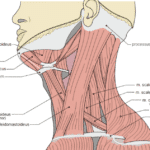3 Ways Massage Relieves Myofascial Pain Syndrome
3 Ways Massage Relieves Myofascial Pain Syndrome
Almost everyone suffers from occasional muscle soreness. Whether prompted by gardening, sports or outdoor activities like hiking, aches and pains are familiar companions for most of us. Myofascial pain syndrome is something different.
What is MPS?
MPS is a chronic pain disorder occurring after a muscle has been contracted repetitively in motions used in jobs or hobbies or by stress-related muscle tension. In addition, pressure on sensitive trigger points in your muscles can cause referred pain in seemingly unrelated parts of your body.
What Kind of Pain?
Of course, symptoms vary from individual to individual, but generally MPS presents as deep, aching pain that persists and even worsens over time. In other words, contrary to popular wisdom, time does not heal these “wounds.” Some individuals may also experience tender spots—knots in certain muscles—which interfere with normal day-to-day activities and create sleep problems.
Treatment
If you have pain that will not go away, even with rest and ordinary self-care, it is wise to see your doctor. She or he may prescribe physical therapy or injections into trigger points. Maybe relaxation through meditation or gentle yoga. Or massage.
A Premium Massage Chair: Relief When You Want It
Having a massage chair in your home can provide you with immediate relief, at home and on demand. No need to set up an appointment and drive across town. Along with encouraging muscle spasms to relax, deep-tissue massage helps break up adhesions in the affected fascia.
Second, knowing you have the opportunity to relax deeply into a massage when you need it provides benefits comfort beyond even physical comfort. Simply taking time to relax with a massage makes a powerful statement about the importance of your wellness.
Third, by addressing your MPS pain, you can spare yourself sleep loss, which can increase chances of experiencing anxiety, depression and chronic insomnia. What’s more, studies have shown that the relaxing effects of massage are cumulative, which means that regular massage therapy helps you build and maintain your health.
More Important Considerations
Keep in mind that pressure on the fascia—the protective layer surrounding your joints, bones and muscles—can sometimes be slightly uncomfortable. But the lasting benefits outweigh any short-term soreness.
One further word of caution. Some research suggests that myofascial pain syndrome may over time develop into fibromyalgia. Fibromyalgia is a chronic condition of widespread body pain, and researchers believe that the brains of people with fibromyalgia become even more sensitive to pain signals over time. Myofascial pain syndrome, some doctors believe, may play a role in starting this process.
So, it is important to listen to your body and take care of yourself—early and often. Massage is a great way to ease the painful trigger points of MPS while indulging in some necessary and well-deserved relaxation, itself a vital part of the remedy.
“Myofascial Pain Syndrome.” Mayo Clinic, Mayo Foundation for Medical Education and Research, 1 Feb. 2018, www.mayoclinic.org/diseases-conditions/myofascial-pain-syndrome/symptoms-causes/syc-20375444.
“MYOFASCIAL MASSAGE.” Massageenvy.com, 2018, www.massageenvy.com/massage/massage-benefits/myofascial-massage/.
Header image from Wikimedia Commons


